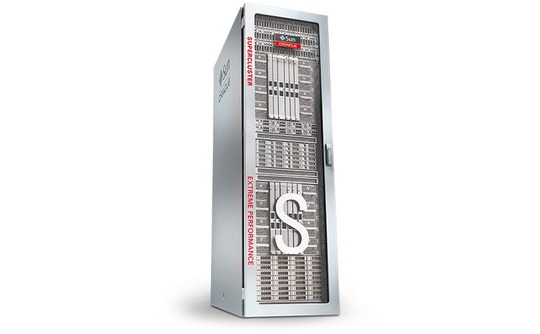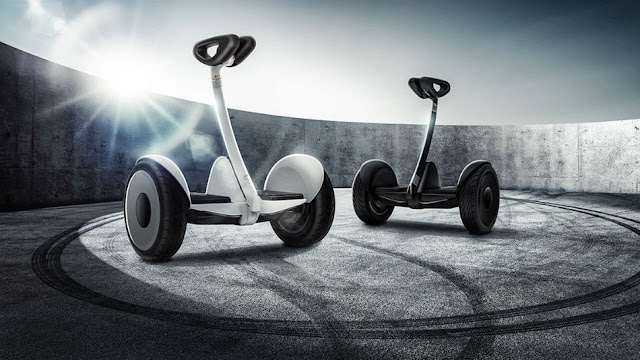ORACLE Has Started Shiping systems based on its latest Sparc M7 processor, which the firm said will go a long way to solving the world's online security problems by building protection into the silicon. The Sparc M7 chip was originally unveiled at last year's Openworld show in San Francisco, and was touted at the time as a Heartbleed-prevention tool.
A year on, and Oracle announced the Oracle SuperCluster M7, along with Sparc T7 and M7 servers, at the show. The servers are all based on the 32-core, 256-thread M7 microprocessor, which offers Security in Silicon for better intrusion protection and encryption, and SQL in Silicon for improved database efficiency.
Along with built-in security, the SuperCluster M7 packs compute, networking and storage hardware with virtualisation, operating system and management software into one giant cloud infrastructure box.
Oracle CTO Larry Ellison was on hand at Openworld on Tuesday to explain why the notion of building security into the silicon is so important.
"We are not winning a lot of these cyber battles. We haven't lost the war but we're losing a lot of the battles. We have to rethink how we deliver technology especially as we deliver vast amounts of data to the cloud," he told delegates.
"We are not winning a lot of these cyber battles. We haven't lost the war but we're losing a lot of the battles. We have to rethink how we deliver technology especially as we deliver vast amounts of data to the cloud," he told delegates.
Ellison said that Oracle's approach to this cyber war is to take security as low down in the stack as possible.
"Database security is better than application security. You should always push security as low in the stack as possible. At the bottom of the stack is silicon. If all of your data in the database is encrypted, that's better than having an application code that encrypts your data. If it's in the database, every application that uses that database inherits that security," he explained.
"Silicon security is better than OS security. Then every operating system that runs on that silicon inherits that security. And the last time I checked, even the best hackers have not figured out a way to download changes to your microprocessor. You can't alter the silicon, that's really tricky."
Ellison's big idea is to take software security features out of operating systems, VMs and even databases in some cases - because software can be changed - and instead push them into the silicon, which can't be. He is also urging for security to be switched on as default, without an option to turn it back off again.
"The security features should always be on. We provide encryption in our databases but it can be switched off. That is a bad idea. There should be no way to turn off encryption. The idea of being able to turn on and off security features makes no sense," he said.
Ellison referred back to a debate that took place at Oracle when it first came up with its backup system - should the firm have only encrypted backups. "We did a customer survey and customers said no, we don't want to pay the performance penalty in some cases," he recalled. "In that case customer choice is a bad idea. Maybe someone will forget to turn on encryption when it should have been turned on and you lose 10 million credit cards."
The Sparc M7 is basically Oracle's answer to this dire security situation. Ellison said that while the M7 has lots of software features built into the silicon, the most "charismatic" of these is Silicon Secured Memory, which is "deceptively simple" in how it works.
"Every time a computer program asks for memory, say you ask for 8MB of memory, we compute a key and assign this large number to that 8MB of memory," he explained. "We take those bits and we lock that memory. We also assign that same number to the program. Every time the program accesses memory, we check that number to make sure it's the memory you allocated earlier. That compare is done by the hardware."
If a program tries to access memory belonging to another program, the hardware detects a mismatch and raises a signal, flagging up a possible breach or bug.
"We put always-on memory intrusion detection into the silicon. We're always looking for Heartbleed and Venom-like violations. You cannot turn it off," the CTO warned.
"We've also speeded up encryption and decompression, which is kind of related to encryption. It runs at memory speed there's zero cost in doing that. We turn it on, you can't turn it off, it's on all the time. It's all built into the M7."
Ellison claimed that running M7-based systems will stop threats like Heartbleed and Venom in their tracks.
"The way Venom worked, the floppy disc driver concealed this code. It's the worst kind of situation, you're writing into memory you're not supposed to. You're writing computer instructions into the memory and you've just taken over the whole computer," he explained. "You can steal and change data. M7 - the second we tried to write that code into memory that didn't belong to that program, where the keys didn't match, that would have been detected real-time and that access would have been foiled.
All well and good, except for the fact that nearly every current computer system doesn't run off the M7 processor. Ellison claimed that even if only three or four percent of servers in the cloud an organisation is using have this feature, they will be protected as they'll get the early warning to then deal with the issue across non-M7 systems.
"You don't have to replace every micro processor, you just have to replace a few so you get the information real-time," he added.
"You'll see us making more chips based on security, to secure our cloud and to sell to people who want to secure their clouds or who want to have secure computers in their datacentre. Pushing security down into silicon is a very effective way to do that and get ahead of bad guys."
SuperCluster M7 and Sparc M7 servers are available now. Pricing has not been disclosed but based on normal Oracle hardware costs, expect to dig deep to afford one.






























![Reliance Jio VoLTE Supported Phones [Updated 2016]](https://blogger.googleusercontent.com/img/b/R29vZ2xl/AVvXsEjLV_x66yWGhyhIvFkyR1fYXGoejj-_EOCygTMjU-iWL8HUkl0z0_DwfFSz8zCdkCemNLPrTYhyfAg3BZaNZr1lfauVt11NmEQUpzUQrNjlOn8lgxj824xYWjI0cvc_QW_0woqkLXRYgHU/s72-c/Reliance+Jio+VoLTE+Supported+Phones.jpg)






